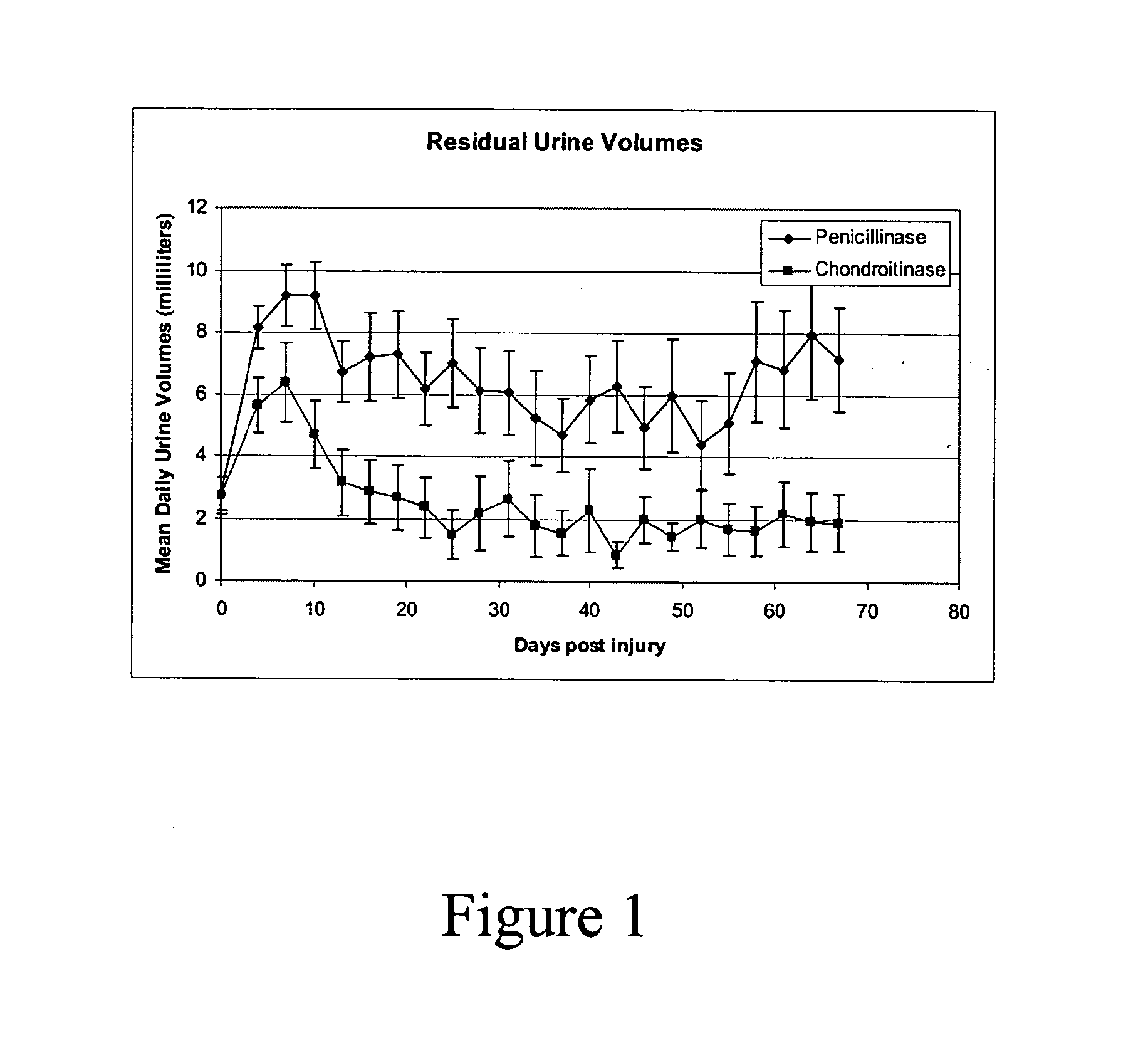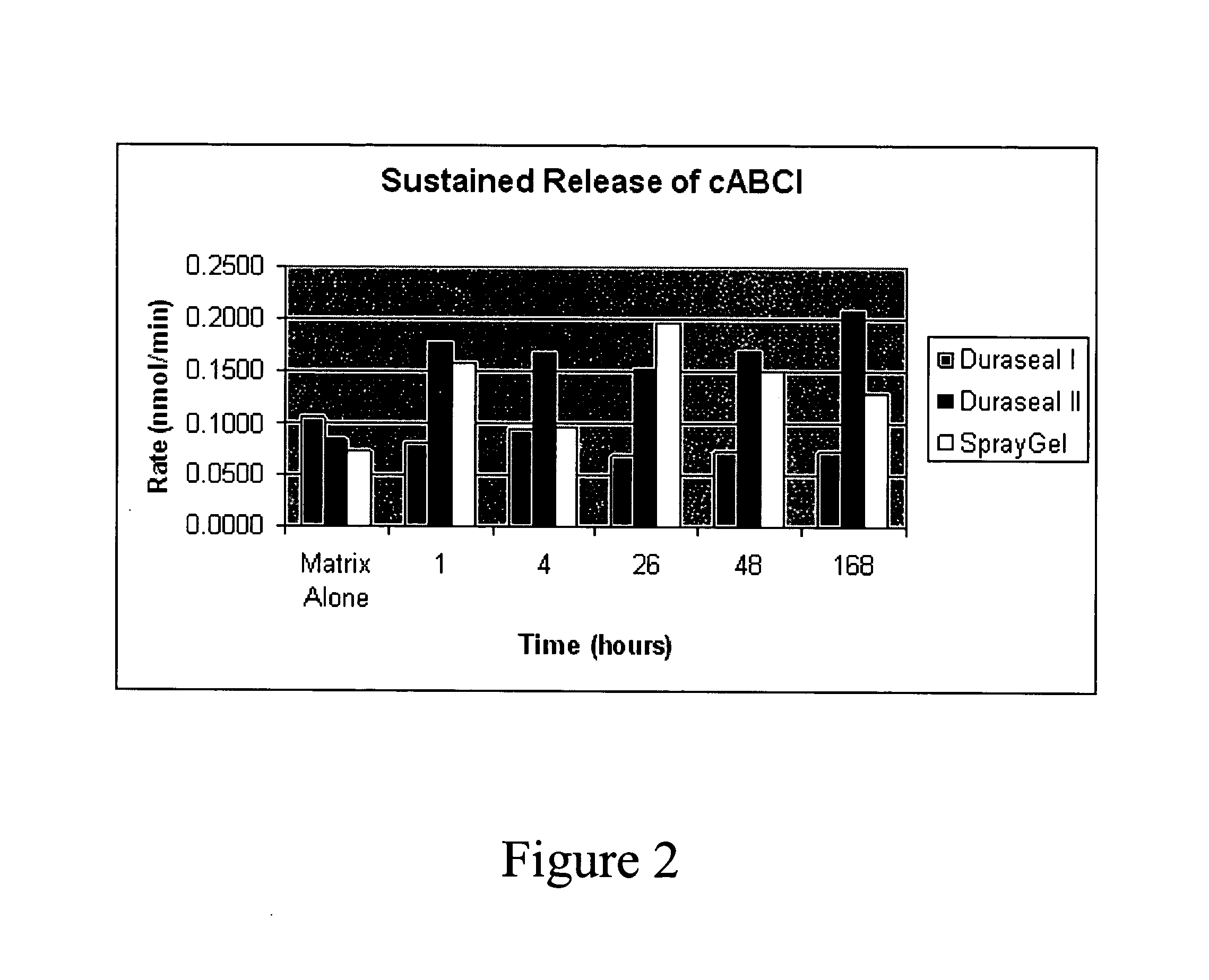Compositions and methods for the treatment of CNS injuries
a technology of compositions and methods, applied in the direction of drug compositions, peptide/protein ingredients, aerosol delivery, etc., can solve the problems of permanent paralysis, loss of motor function and autonomic function, loss of function, etc., and achieve the effect of restoring motor, sensory and autonomic functions
- Summary
- Abstract
- Description
- Claims
- Application Information
AI Technical Summary
Benefits of technology
Problems solved by technology
Method used
Image
Examples
example 1
Chondroitinase Improves Autonomic Functions Following Injury of the Spinal Cord in Rodents
[0048]A study of autonomic function following contusion injury of the spinal cord in rats with the use of Chondroitinase was completed in the Acorda Animal Modeling Facility. Animals (n=38) were subjected to an established model of SCI (Gruner et al. 1996). Beginning immediately following the SCI, 19 animals were treated with Chondroitinase ABC 1 (Seikagaku; Cat number 100332, lot number E02201) intrathecally (i.t.) at 0.06 Units per rat per dose in artificial cerebrospinal fluid, every other day for two weeks. The other 19 animals were treated with enzymatic protein (Penicillinase—Sigma; Cat number P4524) in vehicle.
[0049]The animals were induced and maintained in a state of surgical anesthesia with 1.5% isoflurane carried in medical grade air (95% oxygen, 5% CO2) mixture. An initial dose of Cefazolin (50 mg / kg, s.c.) was given preoperative. During surgery, the animal were placed on a heating ...
example 2
Sustained Release Formulations of Chondroitinase
[0057]The development of a sustained release chondroitinase enzyme delivery technology allows chondroitinase to be administered at any point following SCI, for a given duration. An ideal sustained release system for chondroitinase is one that not only affords prolonged release of the active agent, but one that is practical to use in the context of SCI. At a minimum, the design criteria includes biocompatibility of the device in the CNS, retention of chondroitinase catalytic activity and appropriate chondroitinase release kinetics. Preferably, the system is in the form of a thin film that is applied to the site of SCI or a polymerizing system that is applied to the site, polymerize on contact with the spinal cord and then stay in place throughout the course of the treatment period. The system is pliant so that introduction to the SCI does not lead to additional trauma in the form of compression.
[0058]Over the last few years advancements...
example 3
Sustained Release Formulations of Chondroitinase ABCTypeI
[0066]In one study, Chondroitinase ABCType I was formulated into three sustained release matrices: Duraseal™ I (available from Confluent Surgical), Duraseal™ II (available from Confluent Surgical) and Spray Gel. Duraseal™ is an augmented hydrogel. The Spray Gel is a collagen based gel foam. Release was monitored by measuring chondroitinase activity released from the matrices over time. Results are illustrated in FIG. 2. The results demonstrate that chondroitinase is released from a sustained release matrix over time and may be formulated in a sustained release formulation.
PUM
| Property | Measurement | Unit |
|---|---|---|
| time | aaaaa | aaaaa |
| thick | aaaaa | aaaaa |
| distance | aaaaa | aaaaa |
Abstract
Description
Claims
Application Information
 Login to View More
Login to View More - R&D
- Intellectual Property
- Life Sciences
- Materials
- Tech Scout
- Unparalleled Data Quality
- Higher Quality Content
- 60% Fewer Hallucinations
Browse by: Latest US Patents, China's latest patents, Technical Efficacy Thesaurus, Application Domain, Technology Topic, Popular Technical Reports.
© 2025 PatSnap. All rights reserved.Legal|Privacy policy|Modern Slavery Act Transparency Statement|Sitemap|About US| Contact US: help@patsnap.com



